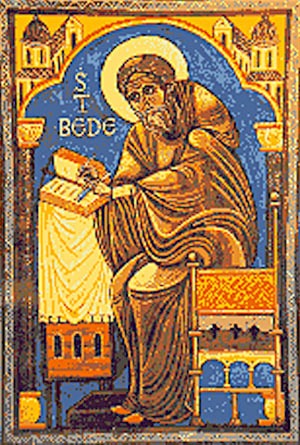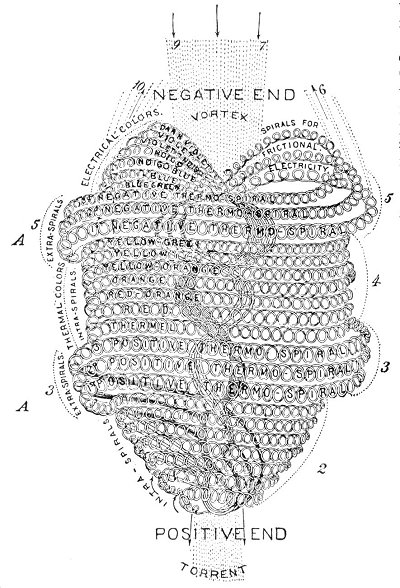The work was again translated by John Stevens (1723), and a third time (with some omissions) by W. Hurst in 1814. In 1840 Dr. Giles published a new edition of Stevens’s translation with certain alterations; and a second edition of the same volume was published in 1842, and incorporated in the collected works of Bede, edited by Dr. Giles. In 1870 a literal translation by the Rev. L. Gidley was published. The present volume is a revision of the translation of Dr. Giles.
A brief analysis of the work may be of some use to the student in keeping distinct the different threads of the narrative, as owing to the variety of subjects introduced, and the want of strict chronological order, it is difficult to grasp the sequence of events as a coherent whole.
The sources from which Bede draws his material are briefly indicated in the dedication to King Ceolwulf which forms the Preface, and in it he acknowledges his obligations to the friends and correspondents who have helped and encouraged him. For the greater part of Book I (cc. 1-22), which forms the introduction to his real subject, he depends on earlier authors. Here he does not specify his sources, but indicates them generally as priorum scripta. These authors are mainly Pliny, Solinus, Orosius, Eutropius, and the British historian Gildas. In the story of Germanus and Lupus he follows closely the Life of Germanus by Constantius of Lyons. Prosper of Aquitaine also supplies him with some materials. When he comes to his main subject, the History of the English Church, he appears to rely but little upon books. Only a very few are referred to here and there, e.g., The Life of St. Fursa, The Life of St. Ethelburg, Adamnan’s work on the Holy Places, and the Anonymous Life of St. Cuthbert. That some form of annalistic records existed before his time, and that these were consulted by him, we may infer from some of his chronological references (cf. iii, I, 9). Local information with regard to provinces other than Northumbria he obtains from his correspondents in various parts of England, and these are expressly mentioned in the Preface.
For the history of the Roman mission and of Kent generally, as well as some particulars with regard to the conversion of other provinces, his chief source is the Church of Canterbury, which apparently possessed, besides oral tradition, written documents relating to the first beginnings of the Church. Moreover, Nothelm, who was the bearer of much important material, had been to Rome and had permission to search the papal archives. But it is in dealing with the history of Northumbria, as is natural, that Bede’s information is most varied and copious. Much of it is apparently obtained directly from eye-witnesses of the events, much would doubtless be preserved in the records of the Church of Lindisfarne, to which he had access, perhaps also in his own monastery. We know that the monasteries kept calendars in which the death-days of saints and others were entered, and other records of similar nature (cf. iv, 14), and that these were used as materials for history.
Passing to the history itself, we may trace a division of subjects or periods roughly analogous to the division into books. Book I contains the long introduction, the sending of the Roman mission, and the foundation of the Church; Books II and III, the period of missionary activity and the establishment of Christianity throughout the land. Book IV may be said to describe the period of organization. In Book V the English Church itself becomes a missionary centre, planting the faith in Germany, and. drawing the Celtic Churches into conformity with Rome.
BOOK I.— In Book I, cc. 1-22, Bede sketches the early history of Britain, describing the country and giving some account of the various races by whom it was inhabited. The story of the Roman occupation is narrated at some length, the invasions of the Picts and Scots and consequent miseries of the Britons, their appeals for help to the Romans, the final departure of their protectors, and the coming of the ,Saxons are described. We have some shadowy outlines of British Church History in the legendary account of the conversion of King Lucius, in the story of St. Alban, affording evidence of a great persecution of Christians during the Roman occupation, in the allusions to the Arian and Pelagian heresies, and in the mission of Germanus and Lupus. A brief allusion to the mission of Palladius is all that we hear of the Irish Church at this period.

Moe is the founder of GnosticWarrior.com. He is a father, husband, author, martial arts black belt, and an expert in Gnosticism, the occult, and esotericism.




